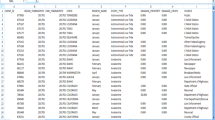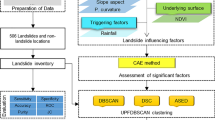Abstract
The disaster management contains collections of real-time natural disaster information, expositions, sets, analyses, forecasts and illustration. It is observed that progression of information knowledge in the form of Geographic Information System (GIS). The disaster management method for natural events, include with GIS and spatial data mining and it can recognize the natural events location and the optimal routes are provided to attain to the desired location without harmful. Due to the exacting geological condition and geographical location, numerous locations damaged from various natural events such as earthquake, flooding, land debris, landslides, earthquakes and cloud burst that can frequently reason sequence assets damages and also life losses. To decrease the damages and sufferer, an effectual real-time method for natural events and location prediction is essential. Therefore, in this paper, a novel framework is presented for discovering the disaster location and event prediction employing the density-based spatiotemporal clustering with GPS. In this process, the noisy data, unwanted and inconsistent data is cleansed from the news database based on natural events to generate the structured data before the implementation of clustering and feature selection. The spatiotemporal clustering method will extract disaster areas such as area of earthquake, flood, landslide and etc. Subsequently, feature is chosen depending on the natural disasters keywords from the clustered data. Extracted feature is given to the decision tree to divide the data into positive and negative class for the assists of event detector and location estimator. The prediction is improved by utilizing the Genetic Algorithm (GA). Hence, GPS technology is the significant data cause of geographic or earth information scheme for monitoring alter of global. We exploit GPS as a location estimator to discover the location of disaster occurred. Therefore, the location of natural disasters can be estimated and predicted using the GPS.







Similar content being viewed by others
References
Fan B, Luo J (2013) Spatially enabled emergency event analysis using a multi-level association rule mining method. Nat Hazards 67(2):239–260
Gaikwad DB, Wanjari YW, Kale, K.V (2014) Disaster management by integration of web services with geospatial data mining, Annual IEEE India Conference (INDICON), pp.1–6
Hsu P, Su W (2012) Hazard hotspots analysis from geospatial database using geospatial data mining technology, IEEE International Geoscience and Remote Sensing Symposium, pp. 962–965
Jordan G (2008) Sustainable mineral resources management: from regional mineral resources exploration to spatial contamination risk assessment of mining. Environmental Geology, springer journal publications 58:153–161
Peng J, Qin K, Yang H, Cheng L (2011) The study on the exploratory spatial data mining method based on partial random walk and its application in GPS TEC analysis, IEEE International Conference on Spatial Data Mining and Geographical Knowledge Services, pp. 112–115
Sakaki T, Okazaki M, Matsuo Y (2013) Tweet analysis for real-time event detection and earthquake reporting system development. IEEE Trans Knowl Data Eng 25(4):919–931
Tang F-q (2011) Mining subsidence monitoring using the method of combining InSAR and GPS technology. Journal of Coal Science and Engineering (China) 17(2):133–136
Torun A, Düzgun S (2006) Using spatial data mining techniques to reveal vulnerability of people and places due to oil transportation and accidents, ISPRS technical commission II symposium, pp.34–48
Wang J, Yen N, Guo S, Cheng Z (2014) Big data analytics for emergency communication networks: a survey. IEEE Communications Surveys & Tutorials 18(3):1–22
Zheng T (2011), Research on coal and gas outburst area forecasting information system of spatial data management, Third Pacific-Asia conference on circuits, Communications and system, pp.1–3
Author information
Authors and Affiliations
Corresponding author
Additional information
Publisher’s note
Springer Nature remains neutral with regard to jurisdictional claims in published maps and institutional affiliations.
Rights and permissions
About this article
Cite this article
Ravikumar, K., RajivKannan, A. An enhancement of location estimation and disaster event prediction using density based SPATIO-temporal clustering with GPS. Multimed Tools Appl 79, 3929–3941 (2020). https://doi.org/10.1007/s11042-019-7583-7
Received:
Revised:
Accepted:
Published:
Issue Date:
DOI: https://doi.org/10.1007/s11042-019-7583-7




